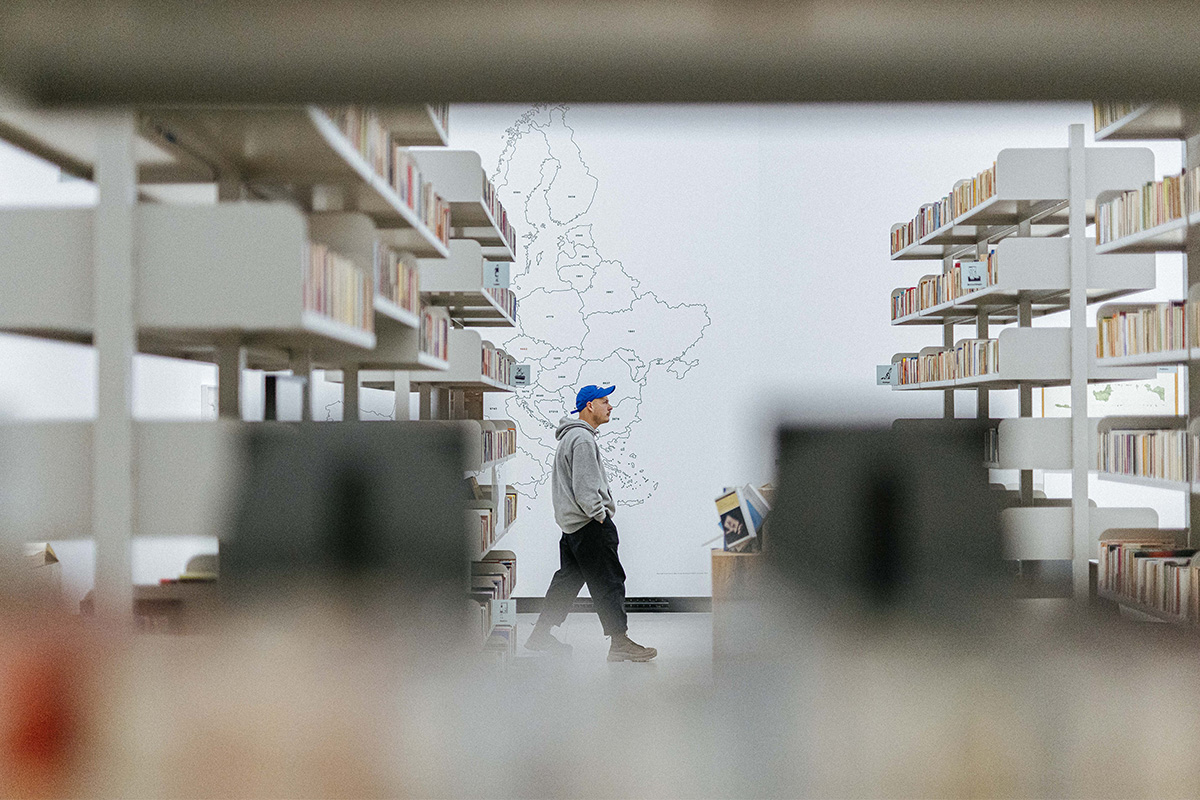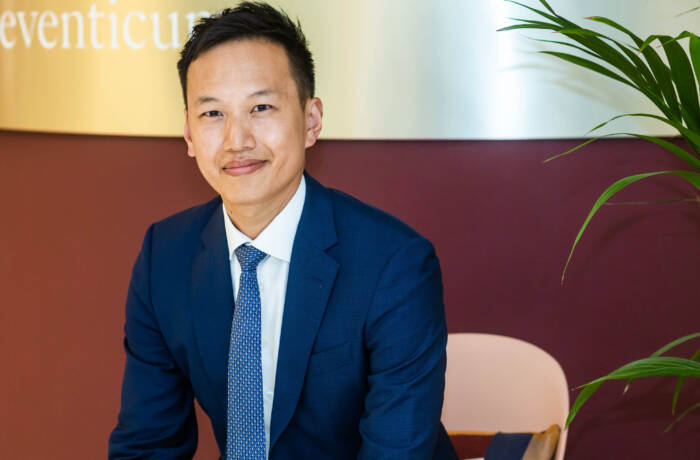
Petr Pudil, collector and founder of Kunsthalle Praha
A decade ago, an entrepreneur bought a decommissioned power station located in a prime position opposite Prague Castle. Investing some $40M together with his Family Foundation he regenerated this brownfield site and in 2015 relaunched it as the landmark Kunsthalle Praha, Prague’s first non-profit private institution. Samantha Welsh speaks with Petr Pudil about his passion for collecting, why he is dedicated to supporting contemporary Czech artists, and his vision for connecting the local art scene with international art movements.

Former electrical substation, art institution Kunsthalle Praha
LUX: What is your background as an entrepreneur?
Petr Pudil: I am co-founder of BPD partners, leading family office in Prague. The BPD partners group actively seeks out companies with promising scientific and technological backgrounds. The priority is projects that bring new challenges regarding healthy economic growth and are in line with internationally recognised standards of social responsibility and sustainability.

The former power station redeveloped as Kunsthalle Praha
A stable part of the portfolio consists of long-term investments in biotechnology and chemistry, including investments in basic research, renewable resources, and the construction of environmentally friendly office complexes and residential properties.
Follow LUX on Instagram: luxthemagazine
LUX: When did you become involved with art philanthropy?
PP: My wife, Pavlina, and I started collecting art almost twenty years ago. We have never seen it as a financial investment, but rather as a tool to understand the connections of the world and life through the lens of artists, which is an alternative and enriching perspective for me as a businessman.

Pavlina and Petr Pudil, collectors and cultural philanthropists
By purchasing contemporary art, we also wanted to support living artists. The idea to build a new Kunsthalle in Prague came about approximately 9 years ago.
LUX: How does Czech fit, historically, within the Central Europe art canon?
PP: The Czech lands and later Czechoslovakia have been in cultural contact with many European centres in the past centuries, naturally with Vienna within the monarchy, with Munich, and later in the 20th century, with Paris. As Václav Havel said, Prague has been a cultural crossroad of Europe for a thousand years. Our country is a natural part of the cultural and historical development of Central Europe.
LUX: What was your founding idea for the Kunsthalle Praha?
PP: We founded Kunsthalle Praha as a non-profit and non-governmental institution whose mission is to bring art to the lives of as many people as possible, with a focus on the younger generation. The second part of our mission is to connect the local scene with the international art environment.
LUX: What collaborations and sectors have you enjoyed shining a light on during these two years?
PP: I will highlight two moments. Since opening, our building has seen over 210,000 visitors, with the majority being younger than 35, which is a great result. And then, the introductory exhibition “Kinetismus,” which was created through a curatorial collaboration with Peter Weibel and ZKM Karlsruhe.

Inaugural exhibition November 2022, Kinetismus, photo by Vojtêch Veškrna, Kunsthalle Praha
It was an highly innovative exhibition that involved demanding research and, at the same time, became very popular with the local audience.
LUX: Vaclav Havel, Nobel Prize satirist and first democratically-elected president of post-soviet Czech and Slovakia, is a symbol for many of the trust vested by the people in literature to say the unsayable. Was the samizdat movement art activism or covert propaganda?
PP: Currently, there is an exhibition at Kunsthalle Praha titled “Read” by Elmgreen & Dragset, where part of the exposition is about Czech samizdat literature.

Installation ‘Point of View’ 2024 at exhibition ‘READ’ by Michael Elmgreen and Ingar Dragnet
Samizdat was neither activism nor covert propaganda. It was driven by the simple desire of people for information and literature that was denied to them. Naturally, such “forbidden fruit” had a much wider audience than the dissident Charter 77 led by informal leader Václav Havel.
LUX: How has Kunsthalle Praha been received by your peers in the contemporary art ecosystem?
PP: Kunsthalle Praha is bringing another platform for the presentation of contemporary and modern art to Prague, as well as a space for trans-generational dialogue between different communities. Our goal is to collaborate with other institutions, which we have been successful in achieving so far. We perceive the cultural institution ecosystem as a collaborative, rather than competitive, environment.
LUX: You are an innovator and serial entrepreneur, where else is your focus?
PP: Surely, it is a sport. I try to engage in some physical activity every day, and running, in particular, is an addiction and a way of mental regeneration for me.
LUX: How do you see your foundation evolving as a platform for sustainability in art?
PP: We have sought to apply sustainability principles already during the renovation of the building. It is not a new construction but the revitalisation of a contaminated brownfield in the historical center of Prague. We are preparing an ESG report and striving to exceed our regional peers in all aspects of ESG metrics
Read more: Lazard’s Jennifer Anderson on the Evolution of ESG Investing
LUX: What one tip would you share with a young collector wanting to make a difference?
PP: It is not easy at all to find distinctiveness, it is actually a very ambitious goal. If you want to build a unique, distinctive collection, I would focus on new, digital media. Everyone knows that the digitisation of society must be reflected in art, but we still don’t know how art will respond to this phenomenon, and we certainly don’t know yet how to collect such art.
Online Editor: Isabel Phillips






